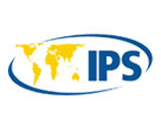

Las comunidades indígenas de Paraguay no tienen acceso a agua potable

Clean Water Out of Reach for Native Peoples
Inter Press Service News Agency
ASUNCION,(IPS) - Of the many things that are not within the reach of everyone in Paraguay, safe drinking water is the one the indigenous population longs for most.
"The water we get from the reservoir is not fit to drink, but we drink it anyway. We have no other option; it's not clean water, but it is water," Neira Esquivel, a Sanapaná indigenous woman from the village of Karanda'y Puku, in the vast Paraguayan Chaco region, told IPS.
Esquivel travelled to Asunción with leaders of her community to demand water, food and formal recognition of their land rights from the National Indigenous Institute.
These journeys to the capital, more than 400 kilometres away, are a permanent feature of their lives. They go especially to voice their water needs.
Communities in the Chaco region, a semi-arid expanse of dense thorn scrubland in northern and western Paraguay, suffer most because in addition to the lack of infrastructure for water supply, droughts are common.
In the area around Karanda'y Puku, which is home to 70 families, "it hasn't rained for seven months; our reservoir is dry and the reserve tank is empty," said Esquivel.
Average rainfall in the Chaco -- an area of over 247,000 square kilometres, covering 61 percent of the national territory -- is 400 millimetres a year, and there is little surface water, while the groundwater is salty.
The sparsely populated Chaco is home to half of Paraguay's 108,000 indigenous people, who represent just over 1.7 percent of the country's population of 6.2 million, 75 percent of which is made up of people of mixed European and indigenous descent.
Water supply is a longstanding problem in the Chaco. Every year, there are shortages in the dry season and an emergency has to be declared to cope with the crisis, Santiago Bobadilla, an expert with the non-governmental Tierraviva organisation which works for the rights of native peoples, told IPS.
Most indigenous villages have reservoirs for rainwater catchment, created by digging hollows in the earth, but they dry out when the rains fail.
"The indigenous people are constantly asking for help. Water supplies sent by truck are only palliative, and the water is not of drinking quality," Bobadilla said.